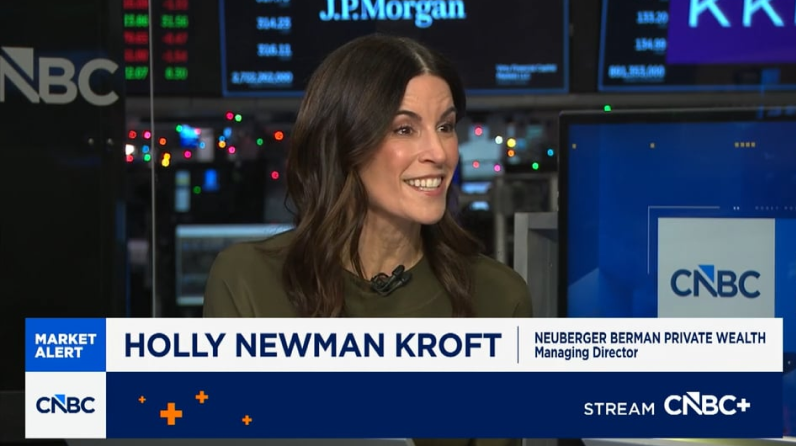

When combined with February’s non-farm payrolls data, we believe that the justification for a lower fed funds rate by the end of the summer remains intact.
February U.S. inflation data was released today, and the numbers came in above consensus for the fourth month in a row. Headline CPI was up +0.4% month-over-month and up +3.2% year-over-year, versus expectations of +0.4% and +3.1%, respectively. Core CPI was up +0.4% on a month-over-month basis and up +3.8% on a year-over-year basis compared with a consensus expectation of +0.3% and +3.7%, respectively.
Shelter remains the main driver in both headline and core inflation. Shelter was up +0.4% month-over-month, but was up only +5.7% year-over-year, reflecting a deceleration from December and January. Compounding the effect of shelter inflation was an increase in energy prices of +2.3% month-over-month. All of the underlying components of the energy index increased—gasoline was up a whopping +3.8%. This increase countered the prior 12-month trend, which saw energy prices fall -1.9%. Combined, shelter and energy accounted for over 60% of the monthly increase in headline CPI. Higher prices were also observed for non-prescription drugs and apparel (both up +0.6% month-over-month), used cars (up +0.5% month-over-month) and airline fares (up +3.6% month-over-month).
More constructive were flat month-over-month prints for both food and food at home indexes, which were both higher by +0.4% month-over-month in January. As highlighted in our recent CIO Weekly Perspectives, Inflation and Consumer Sentiment, the pressure on lower-income consumers as a result of sharp increases in non-discretionary spend such as food, shelter and insurance has resulted in an uptick in credit card delinquencies and slower spending. In addition, in our view, given the upcoming November election, any sustained upward price movement could have meaningful implications for both candidates, but particularly for President Joe Biden as he is likely to cite a strong economy and low unemployment as justification for his re-election.
While some economists and investors may cite the last several months as evidence of a reacceleration in inflation, resulting in a further pause in the path toward more accommodative Federal Reserve (Fed) policy, we believe there is evidence of continued downward pressure on prices across other measures, including PMIs and the non-farm payrolls numbers. With economic growth likely to slow modestly over the course of the year and wage growth past its peak, the foundation for disinflation remains solid in our opinion. We viewed this “last mile” of inflation as the hardest and, as such, expected the Fed to cut rates at a slower pace than what was priced into the market in late 2023.
Perhaps reflecting that this narrative has already been incorporated into investor expectations—or that the print was not as hot as feared—equity markets opened higher following today’s release, with the S&P 500 Index picking up +0.2% in early trading; both 2-Year and 10-Year Treasury yields moved only slightly higher in response. Fed expectations, according to the CME FedWatch Tool, are only slightly changed; the probability of a rate cut in June now sits at 66%.
In short, when combined with Friday’s non-farm payrolls data, we believe that the justification for a lower fed funds rate by the end of the summer remains intact. PPI and PCE are likely to reflect continued, if slow, progress, but we acknowledge that the recent flurry of data pointing toward a stronger-than-expected U.S. economy could result in upward revisions for both growth and inflation in the upcoming March Summary of Economic Projections.


Accolades
The 2026 Forbes | SHOOK Best-In-State Wealth Management Teams list

INSIGHTS
CIO Notebook: Sluggish Job Growth Points to Steady Rates, For Now

MARKET COMMENTARY
Taking Stock of 2025

VIDEO
Holly Newman Kroft Featured on CNBC’s Money Movers December 18

VIDEO
The Kantor Group | Charles Kantor’s Year-End Reflections and Key Questions as We Head Into 2026

INSIGHTS
CIO Notebook: Dual Release of Delayed Non-Farm Payrolls Likely Supports Another Cut

INSIGHTS
Using Tax-Free Gifts for Wealth Transfer
INSIGHTS
CIO Notebook: Powell Plays the Middle as Fed Cuts Rates
MARKET COMMENTARY
Giving Thanks for Market Strength
INSIGHTS
CIO Notebook: September U.S. Non-Farm Payrolls Further Complicate the Narrative
VIDEO
Holly Newman Kroft Featured on CNBC’s Money Movers November 18
VIDEO
Plan for Peace of Mind with Our Estate Planning Organizer
MARKET COMMENTARY
Some Tricks, More Treats
IMPORTANT INFORMATION:
This material is provided for informational purposes only and nothing herein constitutes investment, legal, accounting or tax advice, or a recommendation to buy, sell or hold a security. This material is general in nature and is not directed to any category of investors and should not be regarded as individualized, a recommendation, investment advice or a suggestion to engage in or refrain from any investment-related course of action. Any views or opinions expressed may not reflect those of the firm as a whole. Neuberger Berman products and services may not be available in all jurisdictions or to all client types. Diversification does not guarantee profit or protect against loss in declining markets. Investing entails risks, including possible loss of principal. Investments in private equity are speculative and involve a higher degree of risk than more traditional investments. Investments in private equity are intended for sophisticated investors only. Unless otherwise indicated, returns shown reflect reinvestment of dividends and distributions. Indexes are unmanaged and are not available for direct investment. Investing entails risks, including possible loss of principal. Past performance is no guarantee of future results.
Portfolio positioning views expressed herein are those of Neuberger Berman’s Private Wealth Investment Group, which may include those of the Neuberger Berman’s Asset Allocation Committee. Asset allocation and positioning views are based on a hypothetical reference portfolio. The Private Wealth Investment Group analyzes market and economic indicators to develop asset allocation strategies. The Private Wealth Investment Group works in partnership with the Office of the CIO. The Private Wealth Investment Group also consults regularly with portfolio managers and investment officers across the firm. The Asset Allocation Committee is comprised of professionals across multiple disciplines, including equity and fixed income strategists and portfolio managers. The Asset Allocation Committee reviews and sets long-term asset allocation models, establishes preferred near-term tactical asset class allocations and, upon request, reviews asset allocations for large, diversified mandates. Asset Allocation Committee members are polled on asset classes and the positional views are representative of an Asset Allocation Committee consensus. The views of the Asset Allocation Committee and the Private Wealth Investment Group may not reflect the views of the firm as a whole and Neuberger Berman advisers and portfolio managers may take contrary positions to the views of the Asset Allocation Committee or the Private Wealth Investment Group. The Asset Allocation Committee and the Private Wealth Investment Group views do not constitute a prediction or projection of future events or future market behavior. Defensive positioning generally means an underweight bias on allocations to risk assets such as equities and alternatives. Positioning views may change over time without notice and actual client positioning may vary significantly. Discussion of yield characteristics or total returns of different asset classes are for illustrative purposes only. Such asset classes, such as equities and fixed income, may have significantly different overall risk-return characteristics which should be consider before investing.
The information in this material may contain projections, market outlooks or other forward-looking statements regarding future events, including economic, asset class and market outlooks or expectations, and is only current as of the date indicated. There is no assurance that such events, outlook and expectations will be achieved, and actual results may be significantly different than that shown here. The duration and characteristics of past market/economic cycles and market behavior, including any bull/bear markets, is no indication of the duration and characteristics of any current or future be market/economic cycles or behavior. Information on historical observations about asset or sub-asset classes is not intended to represent or predict future events. Historical trends do not imply, forecast or guarantee future results. Information is based on current views and market conditions, which will fluctuate and may be superseded by subsequent market events or for other reasons.
Discussions of any specific sectors and companies are for informational purposes only. This material is not intended as a formal research report and should not be relied upon as a basis for making an investment decision. The firm, its employees and advisory accounts may hold positions of any companies discussed. Nothing herein constitutes a recommendation to buy, sell or hold a security. It should not be assumed that any investments in securities, companies, sectors or markets identified and described were or will be profitable. Investment decisions and the appropriateness of this content should be made based on an investor's individual objectives and circumstances and in consultation with his or her advisors.
Neuberger Berman Investment Advisers LLC is a registered investment adviser.
The “Neuberger Berman” name and logo are registered service marks of Neuberger Berman Group LLC